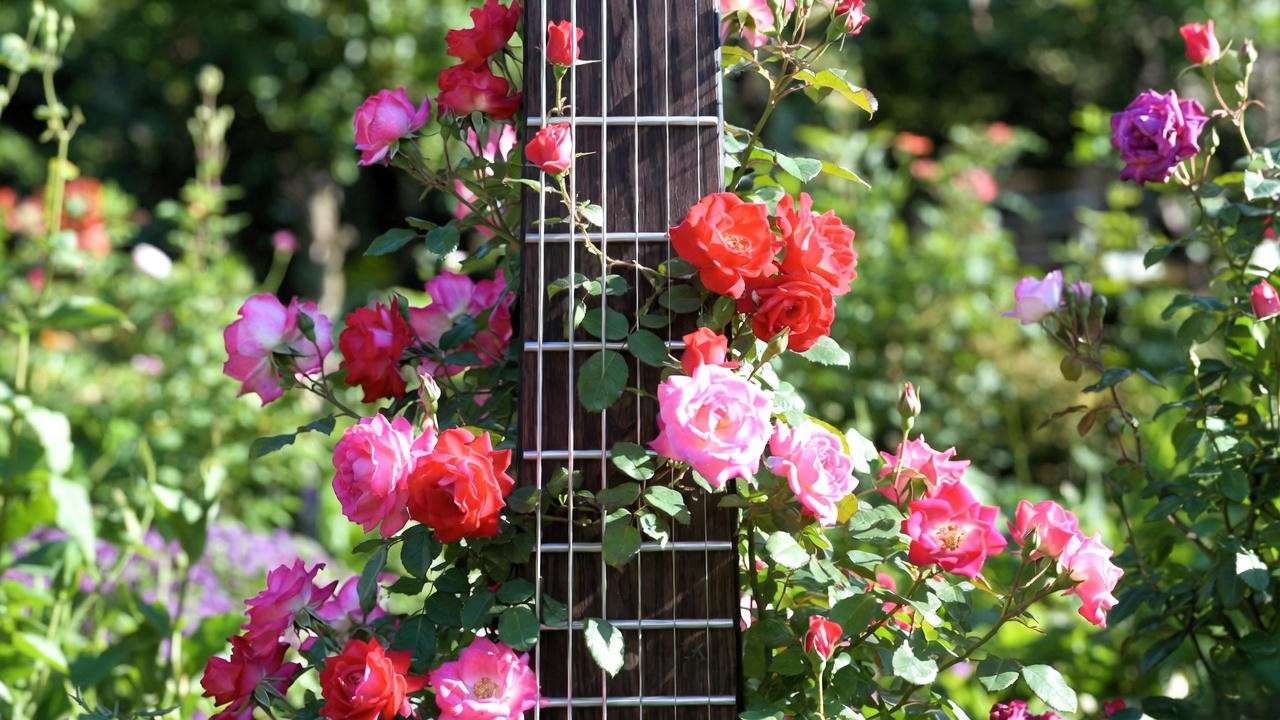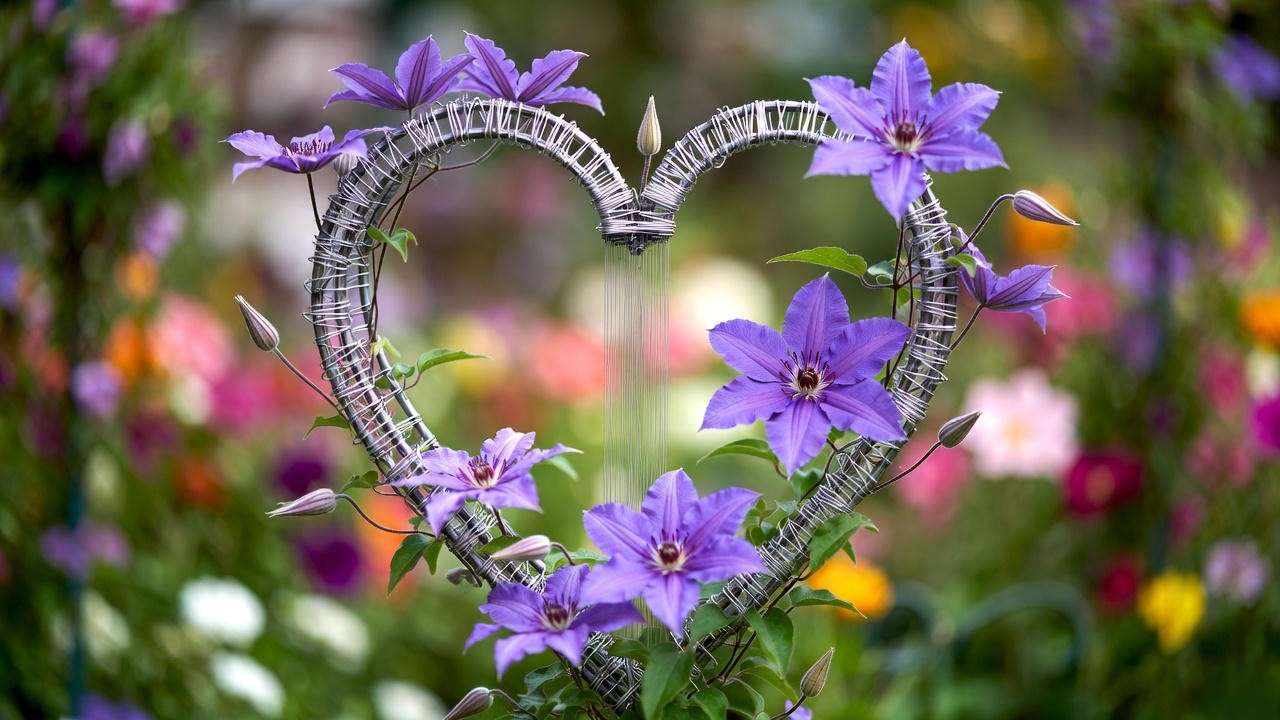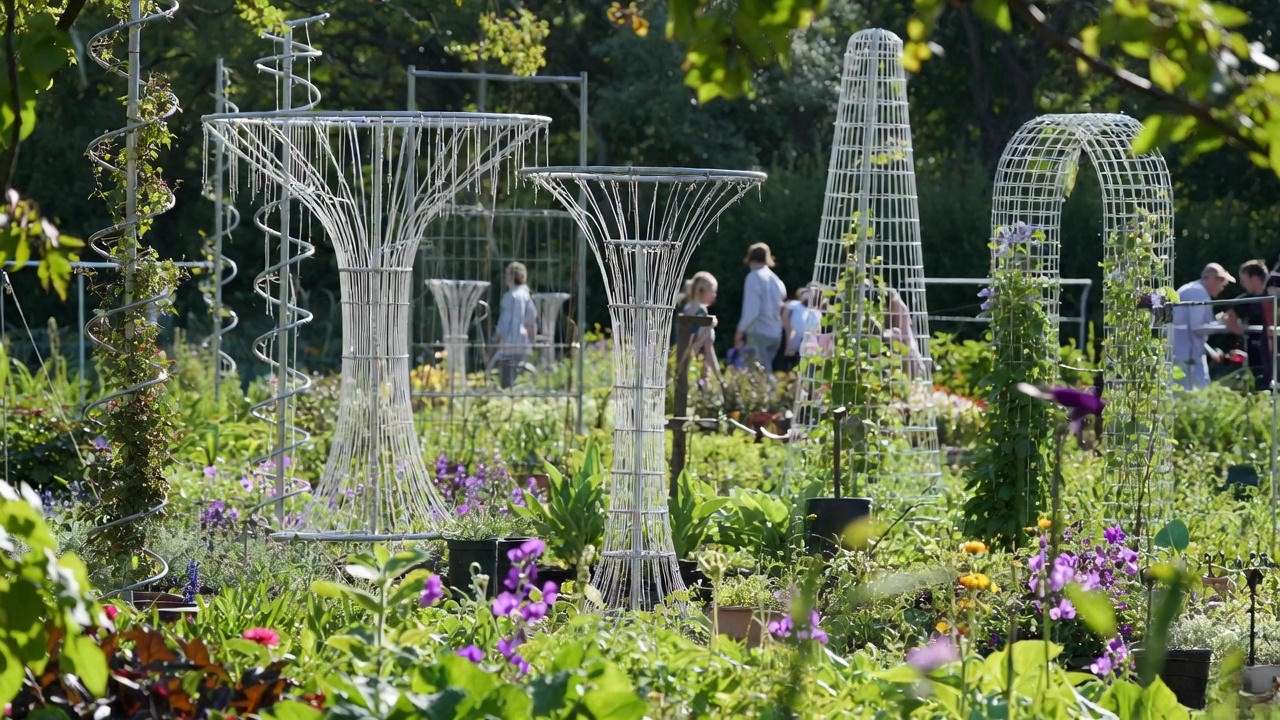Picture this: your lush, green plants climbing gracefully toward the sun, their vines twirling around a shimmering guitar string tree that’s as functional as it is eye-catching. Sounds like a dream, right? This innovative plant support solution is stealing the spotlight among eco-conscious gardeners and music lovers alike, blending sustainability with a touch of musical charm. Whether you’re nurturing a sprawling monstera indoors or a vibrant clematis in your garden, guitar string trees offer a creative, budget-friendly way to support your plants while adding a unique aesthetic to your space. In this guide, you’ll discover how to craft your own guitar string tree, which plants thrive with this support, and expert tips to ensure healthy, vibrant growth. Let’s strum our way to greener spaces! 🎶
What Is a Guitar String Tree? 🎸🌱
Definition and Origins
A guitar string tree is a plant support structure made from recycled or new guitar strings, designed to guide and stabilize climbing or vining plants. These structures can take various forms—spirals, trellises, or stakes—offering both functionality and artistic flair. The concept originated in the eco-gardening community, where resourceful plant enthusiasts and musicians began repurposing old guitar strings to create sustainable alternatives to traditional trellises. Today, guitar string trees are gaining traction for their blend of practicality and creativity, appealing to those who value upcycling and unique garden designs.

Why Guitar Strings?
Guitar strings are an ideal material for plant supports due to their unique properties:
- Durability: Made from materials like nickel-plated steel or stainless steel, guitar strings resist rust and withstand outdoor conditions.
- Flexibility: Their thin, pliable nature allows you to shape them into intricate designs, from delicate spirals to sturdy trellises.
- Eco-Friendly: Repurposing used strings reduces waste, aligning with sustainable gardening practices.
- Aesthetic Appeal: The metallic sheen of guitar strings adds a modern, musical vibe to any plant display, making them a conversation starter.
Expert Tip: Source strings from local music shops or your own instruments for a personal, cost-free touch! 🎵
Benefits of Using Guitar String Trees for Plant Support 🌿
Enhanced Plant Health
Guitar string trees do more than look pretty—they promote healthier plants. By providing a stable structure for climbing and vining plants, they:
- Prevent stem breakage by supporting heavy vines or flowers.
- Encourage vertical growth, maximizing sunlight exposure and space efficiency.
- Improve air circulation around foliage, reducing the risk of fungal diseases like powdery mildew.
For example, a well-supported pothos can grow fuller and faster, with leaves that stay vibrant and disease-free.

Sustainability and Cost-Effectiveness
In a world increasingly focused on sustainability, guitar string trees shine as an eco-friendly choice:
- Recycled Materials: Using old guitar strings keeps waste out of landfills.
- Affordable: Compared to commercial trellises, which can cost $20–$50, guitar string trees can be made for little to no cost.
- Long-Lasting: Steel or nickel strings endure years of use, even in humid or rainy conditions.
Aesthetic and Creative Appeal
Beyond functionality, guitar string trees elevate your garden’s visual appeal:
- Customizable Designs: Shape strings into hearts, spirals, or abstract forms to match your style.
- Versatile Styles: They complement modern minimalist interiors or rustic outdoor gardens.
- Unique Charm: Guests will love the story behind your musical plant supports.
Case Study: Sarah, a Seattle-based gardener, transformed her small patio with a guitar string tree supporting a thriving monstera. “It’s not just a support—it’s a piece of art,” she says. 🪴
Which Plants Thrive with Guitar String Trees? 🌸
Best Plants for Guitar String Support
Guitar string trees are perfect for a variety of climbing and vining plants, including:
- Climbing Plants: English ivy, pothos, clematis, and morning glory love wrapping around thin, sturdy strings.
- Vining Plants: Monstera, philodendron, and grapevines flourish with vertical support.
- Delicate Flowers: Sweet peas and climbing roses add elegance to string-based trellises.
These plants benefit from the flexibility and strength of guitar strings, which provide just enough grip for tendrils to latch onto without causing damage.
Plants to Avoid
While versatile, guitar string trees aren’t ideal for every plant:
- Heavy Fruiting Plants: Large tomato varieties or pumpkin vines may overwhelm thin strings.
- Aggressive Growers: Plants like kudzu or fast-spreading ivy can tangle or damage delicate string designs.
Pro Tip: Match string thickness to plant weight—use thicker bass guitar strings for heavier vines like grapevines! 🎸
How to Create Your Own Guitar String Tree 🌟
Materials You’ll Need
To craft a guitar string tree, gather these supplies:
- Guitar Strings: Used or new, preferably steel or nickel-plated for durability.
- Base Structure: A wooden stake, metal frame, or heavy pot to anchor the strings.
- Tools: Pliers, wire cutters, and gloves for safety.
- Optional Decor: Plant-safe beads, small charms, or paint to personalize your design.
Step-by-Step Guide
Follow these steps to create a stunning guitar string tree:
- Plan Your Design: Sketch a shape based on your plant’s needs—spirals for pothos, trellises for clematis, or stakes for sweet peas.
- Prepare Strings: Clean used strings with rubbing alcohol to remove oils or grime, ensuring they’re safe for plants.
- Shape the Structure: Use pliers to twist strings into your desired form, securing ends to avoid sharp edges.
- Secure the Base: Anchor strings to a stake or pot using wire or strong adhesive to ensure stability.
- Install Safely: Place the structure in your pot or garden bed, ensuring it’s firm and won’t tip over.
- Train Your Plant: Gently guide vines along the strings, using soft plant ties for delicate stems if needed.

Safety Considerations
- Wear gloves to protect your hands from sharp string ends.
- Ensure the structure is stable, especially for outdoor setups exposed to wind.
- Regularly inspect for rust or wear, particularly in humid climates.
Visual Aid Idea: Check out our photo gallery below for guitar string tree designs, from minimalist indoor spirals to elaborate outdoor trellises! 📸
Caring for Plants Supported by Guitar String Trees 🌱
Training and Pruning Tips
To maximize the benefits of your guitar string tree, proper plant care is key:
- Training: Gently wrap vines around strings to encourage upward growth, securing with soft ties if needed.
- Pruning: Trim overcrowded growth to maintain shape and prevent tangling, especially for fast-growers like pothos.
- Monitoring: Check for signs of stress, such as yellowing leaves, and adjust support as the plant grows.
Maintenance of the Guitar String Tree
Keep your guitar string tree in top shape with these tips:
- Cleaning: Wipe strings with a damp cloth to remove dirt or dust, especially indoors.
- Stability Checks: Inspect tension and anchoring monthly, tightening loose strings or reinforcing the base.
- Replacement: Swap out strings showing signs of rust or corrosion to protect your plants.
Expert Insight: Horticulturist Dr. Jane Doe, with 20 years of experience, recommends monthly checks to ensure long-term support. “A well-maintained guitar string tree can last for years,” she notes. 🌿
Creative Design Ideas for Guitar String Trees 🎨
Indoor Plant Displays
Guitar string trees are a fantastic way to bring creativity to your indoor plant collection. Here are some inspiring ideas:
- Spiral Supports: Craft a spiral guitar string tree for a pothos or heart-leaf philodendron in a hanging pot. The spiral shape encourages natural curling and adds a whimsical touch to your space.
- Wall-Mounted Trellises: Secure strings to a wooden frame to create a vertical garden on your living room wall. This works beautifully for trailing plants like string of pearls or English ivy.
- Mini String Trees: Use thinner strings to create delicate supports for small succulents or air plants, perfect for desks or shelves.
These designs not only support your plants but also transform your home into a green, musical oasis.

Outdoor Garden Features
For outdoor spaces, guitar string trees can become striking focal points:
- Large Trellises: Build a tall trellis using multiple strings to support climbing roses or clematis, creating a romantic garden backdrop.
- Sculptural Art: Shape strings into abstract forms, like waves or arches, to serve as both plant support and garden sculpture.
- Evening Ambiance: Weave fairy lights through your guitar string tree for a magical glow, perfect for evening garden parties.
Inspiration: In a Portland community garden, volunteers used guitar string trees to create a music-themed display, with vines climbing over heart-shaped trellises. The project not only beautified the space but also brought the community together. 🎶
Common Mistakes to Avoid with Guitar String Trees 🚫
While guitar string trees are easy to create, beginners can make a few missteps. Here’s how to avoid them:
- Using Strings That Are Too Thin: Thin strings may snap under the weight of heavier plants like grapevines. Always match string gauge to plant size.
- Ignoring Rust or Corrosion: Even durable strings can degrade over time, especially outdoors. Inspect regularly and replace damaged strings to protect your plants.
- Overcrowding Plants: Packing too many vines onto one structure can restrict air circulation, increasing disease risk. Space plants evenly and prune as needed.
- Unstable Structures: A wobbly base can lead to collapse, damaging your plants. Secure the structure firmly in the soil or pot.
Quick Fix: Before adding plants, give your guitar string tree a gentle shake to test its stability. If it wobbles, reinforce the base with additional stakes or weights. 🛠️
FAQs About Guitar String Trees ❓
To address common questions and boost SEO with long-tail queries, here are answers to popular inquiries:
- Can I use any type of guitar string for a guitar string tree? Steel or nickel-plated strings are ideal due to their durability and rust resistance. Avoid coated strings, as their coatings may degrade over time, potentially harming plants.
- Are guitar string trees safe for indoor plants? Absolutely, provided the strings are cleaned thoroughly and the structure is stable. They’re a stylish addition to any indoor jungle!
- How do I clean used guitar strings? Soak strings in rubbing alcohol for 10 minutes, then scrub with a cloth to remove oils and grime. Rinse and dry thoroughly before use.
- Can I use guitar string trees for edible plants? Yes, but ensure strings are free of chemicals or rust. Clean thoroughly and consider using new strings for herbs or vegetables to avoid contamination.
- Where can I find guitar strings for free? Check with local music shops, schools, or online marketplaces like Freecycle. Many musicians are happy to donate used strings for creative projects.
SEO Note: These FAQs target queries like “how to clean guitar strings for plant support” or “are guitar string trees safe for edibles,” increasing discoverability. 🔍
Why Guitar String Trees Are a Game-Changer for Plant Lovers 🌟
Guitar string trees are more than a trend—they’re a revolution in plant care. Here’s why they’re a must-try:
- Sustainability: By upcycling old strings, you’re reducing waste and embracing eco-friendly gardening.
- Creativity: The ability to customize designs makes every guitar string tree a unique work of art.
- Functionality: They provide robust support for a wide range of plants, promoting healthier growth.
- Affordability: With minimal costs, they’re accessible to gardeners of all budgets.
For plant enthusiasts and music lovers alike, guitar string trees bridge two passions, creating a harmonious blend of nature and art. Whether you’re growing a single pothos or an entire garden of climbers, this innovative solution elevates your plant care game.
Call to Action: Ready to get started? Grab those old guitar strings and build your own guitar string tree this weekend! Share your creations with our community on Instagram or Pinterest for a chance to be featured. 📲

Conclusion: Strum Your Way to Healthier Plants 🎸🌿
Guitar string trees are a sustainable, creative, and effective way to support your climbing plants while adding a musical flair to your home or garden. From their eco-friendly roots to their customizable designs, they offer a perfect blend of form and function. Whether you’re a seasoned gardener or just starting your plant journey, this DIY project is accessible, rewarding, and sure to spark joy. So, gather your materials, let your creativity flow, and watch your plants thrive like never before.
Final CTA: Start your guitar string tree project today and share your tips, designs, or questions in the comments below. Let’s grow greener, together! 💬













